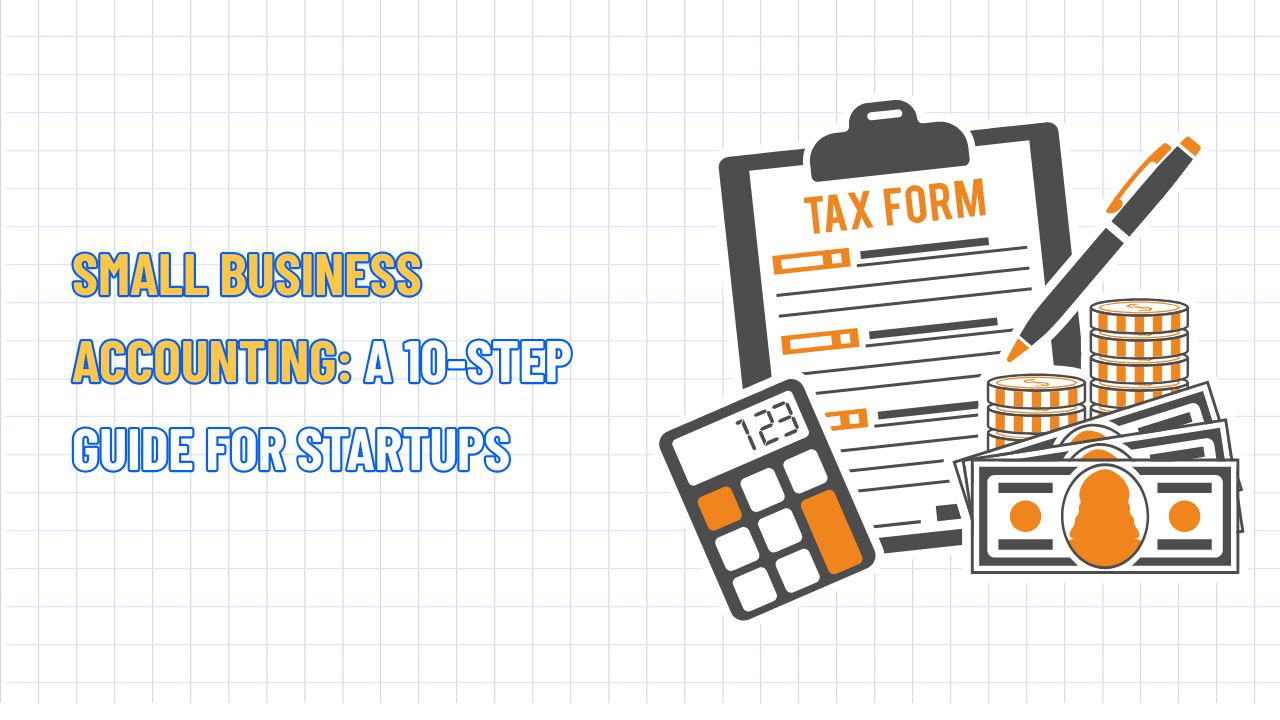Guide to Starting A Successful Import-Export Business 2025
Table of Contents Hide
In 2025, global trade is booming, creating great opportunities for both startups and expanding businesses. Although attractive, import-export business requires clear strategy and practical understanding. This article, NextSky will guide you step by step to build a stable business in a volatile global context.
What is an import-export business?
An import-export business involves purchasing goods from one country and distributing them to another for commercial purposes, aiming to maximize global profits. These businesses bridge domestic producers and international consumers, handling legal procedures, transportation, and product adaptation to suit regional cultures. Their ability to manage cross-border supply chains and strategic partnerships makes this sector a core driver of global trade.

Read more: Top 26 Best Online Business Ideas Worth Trying Today
Why should you start an import-export business?
The import-export industry offers unique advantages, making it an attractive field in 2025:
- Global market access: Reach diverse customer bases, from growing Asian markets to established economies in North America and Europe.
- High profit potential: By sourcing from low-cost regions and selling in high-demand markets, businesses can achieve 10% to 50% profit margins, depending on the product and strategy.
- Scalability: Start with as little as $5,000 for a home-based model and scale up as you build supplier and buyer networks.
- Economic diversification: Spreading markets reduces risks from economic fluctuations in individual countries.
- Cultural and professional growth: Exposure to diverse cultures fosters creativity and global perspectives.
- Technological advancements: Platforms like Shopify, Alibaba, and Amazon Global simplify operations and customer outreach with minimal effort.
Learn more: TOP 40+ Home business at home with Real Examples
Types of import-export businesses
Import-export businesses come in various forms, each with distinct operations and risk levels. Choosing the right model depends on your goals, resources, and risk tolerance:
- Export trading company (ETC): Acts as an intermediary between domestic producers and international buyers, temporarily owning goods and earning commissions per transaction.
- Export management company (EMC): Serves as an extension of domestic suppliers in foreign markets, handling marketing, transportation, and export procedures.
- Import-export merchant: Buys and sells goods independently, bearing market risks but retaining complete profit control.
- Wholesale import-export: Focuses on large-volume transactions, importing bulk goods and distributing them to retailers, which is ideal for stable industries.
- Retail import-export: Targets end consumers directly via e-commerce platforms or stores, effective for unique or trendy products.
- International dropshipping: Requires no inventory or logistics management, focusing on marketing while suppliers handle orders, perfect for beginners.
- Global E-commerce: Leverages platforms like Alibaba or Amazon Global to sell worldwide without a physical presence.
- Export trading house: Consolidates goods from multiple domestic sources, standardizes, and exports them, suitable for those experienced in supply chain management.

Guide to starting an import-export business from A to Z
Starting an import-export business is challenging, but you can build a sustainable enterprise with a strategic plan and the practical steps below.
Conduct in-depth market research.
Market research is critical to building a strong import-export business. To succeed, identify high-demand products and promising markets to target. Here’s how:
- Trend analysis: Use tools like Google Trends, GlobalEDGE, and data from the International Trade Administration to identify growing markets and products.
- Competitor analysis: Study competitors’ products, pricing, and market positioning to find gaps you can exploit.
- Cultural considerations: Understand cultural preferences and consumer behavior in target markets to tailor products.
- SWOT analysis: Assess strengths, weaknesses, opportunities, and threats to meet market needs.

Example: If passionate about sustainable fashion, research the demand for eco-friendly clothing in the EU, where regulations and consumer preferences favor green products.
Read more: 14 Lucrative Part-Time Business Ideas to Start
Choose a niche and business model
Select a niche aligned with your expertise, passion, and market needs. In 2025, promising niches include eco-friendly products, tech gadgets, and healthcare goods. Based on resources and risk tolerance, choose a model from traditional merchants, ETC/EMC, or flexible dropshipping.
NextSky Expert Tip: Start with a niche you understand to build credibility and negotiate effectively. For example, if knowledgeable about electronics, focus on importing tech gadgets from Asia to tech-savvy markets.
Learn more: 25 Family Business Ideas to Build Wealth and Strengthen Bonds
Develop a comprehensive business plan

A solid business plan outlines your strategy and operations. It should include:
- Goals: Define short- and long-term objectives, like entering two new markets within a year.
- Target market: Specify countries and customer segments, such as retailers or end consumers.
- Competitive analysis: Highlight competitive advantages and factors that set your business apart.
- Financial projections: Estimate startup costs ($5,000–$100,000), quarterly/annual revenue forecasts, break-even points, and profitability timelines.
- Risk management: Plan for challenges like currency fluctuations, supply chain disruptions, or trade policy changes.
- Marketing strategy: Outline how to attract buyers and suppliers using digital platforms and trade shows.
Resource: Download free business plan templates from the U.S. Small Business Administration (SBA).
Register your business and secure funding
- Business registration: Choose a legal structure (e.g., LLC or corporation) and register with local, state, and federal authorities. Obtain an Employer Identification Number (EIN) from the IRS for tax and financial purposes.
- International registration: If operating abroad, complete registration in those countries. Some require appointing a local agent for legal and administrative tasks.
- Licenses: Obtain import-export licenses for specific products like agricultural goods or electronics. Register as an Importer of Record (IOR) using CBP Form 5106 with U.S. Customs and Border Protection (CBP).
- Customs bonds: Purchase customs bonds for shipments valued over $2,500 to cover duties and fees.
- Insurance: Secure export credit insurance from the U.S. Export-Import Bank (EXIM) and cargo insurance to protect against non-payment and transport losses.
- Funding: Source capital through personal savings, bank loans, trade financing, or crowdfunding. Budget for inventory, shipping, and marketing to ensure stable cash flow.
See more: TOP 25 Seasonal Business Ideas to Boost Your Income
Source products and build supplier relationships
Finding reliable suppliers is crucial for success. Follow these steps:
- Sourcing products: Attend trade shows, explore B2B platforms like Alibaba, or connect via embassy trade offices to find quality suppliers.
- Supplier evaluation: Assess suppliers based on product quality, pricing, reliability, and business ethics, and request samples to verify consistency.
- Negotiate terms: Secure favorable pricing and payment terms, like cash-in-advance or letters of credit, to minimize risks.
- Build relationships: Foster trust through open communication, timely payments, and long-term contracts for a stable supply chain.

Example: If importing gemstones from Jordan, ensure suppliers comply with Jordanian embassy regulations, providing valid certificates of origin and export licenses.
Read more: How to Start a Reseller Business: A Comprehensive Guide to Success
Develop marketing and sales strategies
To build a strong brand and attract customers, tailor strategies to your target audience:
- Online presence: Optimize your website for international traffic with Shopify’s multilingual features and SEO tools, and list products on platforms like Amazon Global or Alibaba.
- Content marketing: Create blogs, videos, and infographics showcasing product value and industry expertise.
- Networking: Attend trade shows (e.g., Hannover Fairs) and join trade associations to connect with buyers and distributors.
- Pricing model: Set 10–15% commissions for ETC/EMC models or fixed fees for stable revenue. For merchants, price goods to ensure profitable markups.
Master logistics and transportation
Efficient logistics ensure timely delivery and enhance customer experience:
- Transport methods: Use air freight for high-value or urgent goods, sea freight (FCL or LCL) for large shipments, or multimodal transport for flexibility.
- Freight partners: Work with reputable freight forwarders to handle shipping and customs clearance.
- Documentation: Prepare documents like pro forma invoices, commercial invoices, packing lists, bills of lading, air waybills, and certificates of origin. Use Harmonized System (HS) codes for accurate product classification to avoid customs delays.
- Customs compliance: Hire customs brokers to navigate regulations, duties, and fees. Ensure compliance with trade agreements and sanctions (e.g., WTO, UN).
Learn more: Top 12 Inspiring Retirement Business Ideas for Seniors
Manage legal and regulatory requirements
Compliance with global trade laws is non-negotiable:
- Customs regulations: Understand import-export procedures, tax classifications, and valuation methods to avoid penalties.
- Product standards: EnsureNun chắc chắn rằng sản phẩm đáp ứng các yêu cầu về an toàn, chất lượng và nhãn mác tại thị trường xuất khẩu để tránh bị từ chối hoặc thu hồi.
- Intellectual property: Register trademarks and respect third-party IP to avoid legal disputes.
- Export controls: For dual-use products (e.g., electronics), verify Export Control Classification Numbers (ECCN) issued by the U.S. Department of Commerce.
Resource: Consult agencies like the U.S. Commercial Service or trusted customs brokers for country-specific compliance guidance.
Read more: TOP 15 Creative Pet Business Ideas Make You Profit
Manage payments and currency risks
Ensure secure payments and minimize financial risks:
- Payment methods: Prioritize letters of credit (L/C) for secure transactions, or use documentary collection or open accounts. Avoid upfront cash payments unless offered significant discounts.
- Currency risks: Use forward contracts or multi-currency accounts to hedge against exchange rate fluctuations.
- Financing: Leverage trade finance solutions like EXIM loans, accounts receivable financing, or supplier credit to optimize cash flow.
Scale and optimize your business
- Track performance: Monitor key performance indicators (KPIs) like delivery times, profit margins, and customer satisfaction.
- Diversify markets: Expand into new regions or product categories to mitigate risks.
- Leverage technology: Use Shopify Markets for localization, shipping, and compliance management. Integrate APIs for real-time order and inventory tracking.
- Stay informed: Keep up with trade policies, tariffs, and market trends via Trade.gov and Global Trade Magazine.
Import-export business opens up global opportunities for those who dare to innovate and persevere. To master the global market and break through revenue, you can take advantage of the collection of Shopify themes from Nextsky to optimize your digital presence to customers.










